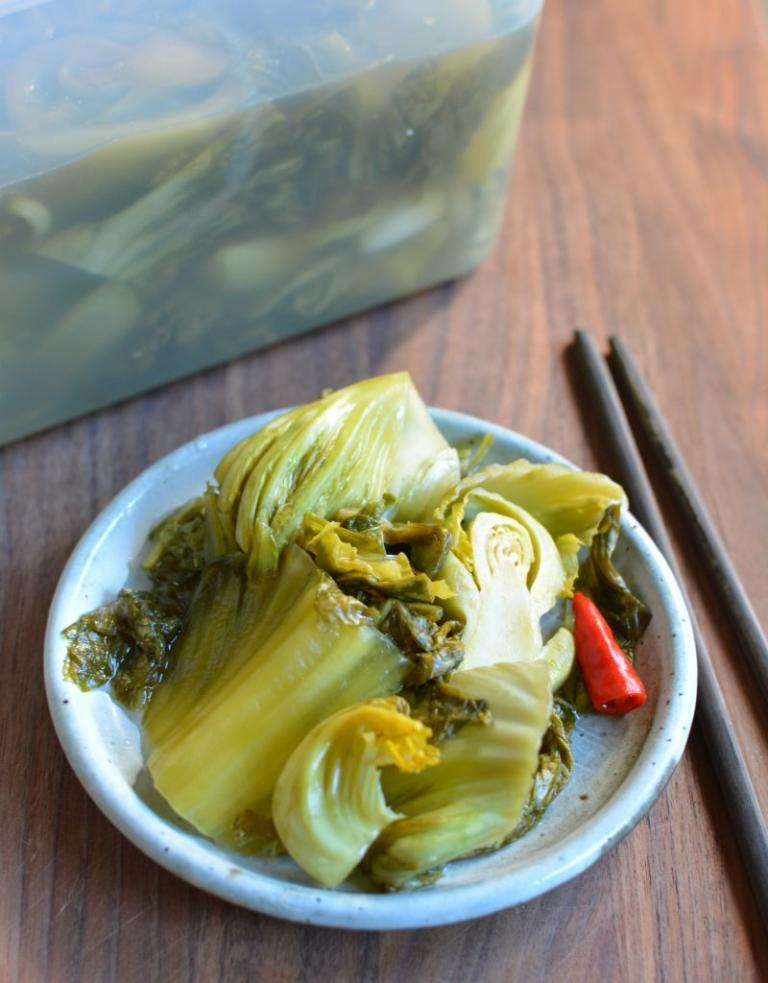Asian Pickles in China
4 min readIntroduction
China is a country with a long history of taking its pickles and condiments very seriously. And yet here in the West, Chinese pickles—when they appear at all—have been relegated to jars of questionable quality on dusty shelves at the Asian grocery. This is a culinary travesty that I am hoping you and I can undo. There’s a magic to Chinese pickles that turns them into something far greater than the sum of their parts—like fabric, sticks, and string transformed into a soaring kite. The Middle Kingdom is home to some of the oldest codifications of cuisine (take that, France!), and it is by far one of the globe’s oldest known food-preserving cultures. We have the Chinese to thank for fermented soybeans (the edible grandparent of soy sauce), sake and Chinese rice wine, rice vinegar, miso—many of the most commonly used condiments and flavors of East Asian cuisines. The Chinese discovered the mold and the processes still employed to craft these foods today.

Introduction China is a country with a long history of taking its pickles and condiments very seriously. And yet here in the West, Chinese pickles—when they appear at all—have been relegated to jars of questionable quality on dusty shelves at the Asian grocery. This is a culinary travesty that I am hoping you and I can undo. There’s a magic to Chinese pickles that turns them into something far greater than the sum of their parts—like fabric, sticks, and string transformed into a soaring kite. The Middle Kingdom is home to some of the oldest codifications of cuisine (take that, France!), and it is by far one of the globe’s oldest known food-preserving cultures. We have the Chinese to thank for fermented soybeans (the edible grandparent of soy sauce), sake and Chinese rice wine, rice vinegar, miso—many of the most commonly used condiments and flavors of East Asian cuisines. The Chinese discovered the mold and the processes still employed to craft these foods today.
The original word for pickle in Chinese, tsu—which translates literally to “salt and incubate”—dates back to the Chou dynasty around 1100. The first Chinese preserved foods were more like condiments, and they were a savory blend of fermented meat and salt, sometimes mixed with wine and mold cultures. It wasn’t until the sixth century that making brine- pickled vegetables and fruits—what we tend to think of as pickles—came into common practice. Today, salted pickles (yen tshai) and acidic pickles (suan tshai) from either lacto-fermentation or a vinegar brine remain in common practice.

China’s long history is also full of kitchen tinkering: evidence of drying, smoking, salting, fermenting, and pickling go back to the Zhou dynasty, three thousand years ago. During the Qing Dynasty (which lasted from the seventeenth century to the early twentieth), the imperial court was staffed with a myriad of food specialists; among them was one lucky fool employed to do nothing but cultivate and serve the royal pickles. And in the 1970s, a fascinating archeological find was the two-thousand- year-old tomb of a woman buried in her kitchen during the Han dynasty, one of the most food-centric eras of them all. (In fact, we have the Han to thank for fermented black beans, noodles, and our favorite dim sum buns.) The tomb contained dozens of ingredients, cooking tools, and cooking instructions—and pickles aplenty in crocks.
While some Chinese pickles involve lengthy waiting periods, attention to fermentation, or intricate preparations, for the home cook there are plenty of “quickles” (quick + pickle = quickle) and other preserved foods that are not only delicious from the jar, but also make some of the best ingredients for preparing finished dishes on the entire Asian continent. These doable and highly palatable pickles are the ones I’ve gathered here, in the section called “Traditional Pickles,” accompanied by a number of recipes of my own that showcase great Chinese flavors (“Inspired Pickles”). And just for good measure, I also include a few how-to’s on some of the essential Chinese sauces that taste best when made in your own kitchen.
All these pickles strike a balance among the six flavors that dominate Chinese cuisine: sweet, sour, pungent, salt, bitter, and savory. Some are spicy, and some have the floral notes of Sichuan pepper, but overall, fans of grandma’s pickles are going to find these balanced flavors familiar and pleasurable: vinegar, salt, garlic, ginger, soy sauce, hot chiles, and a hint of sugar come intoplay, and the taste of the vegetables has the opportunity to shine through. Think of Chinese pickles as yachts on calm seas: gently riding flavor waves, occasionally venturing into new waters, but mostly keeping your meal awash in a welcome brine. Ahoy, ahoy .









